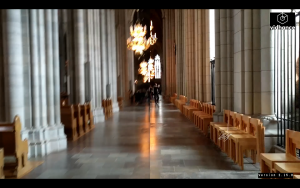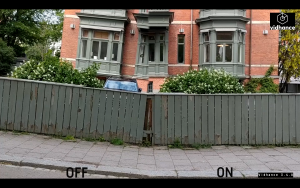3. Motion blur considerations

Video artefacts such as motion blur already exist in video feeds initially but applying video stabilization can increase their visibility. Motion blur reduction can be applied to compensate for this, but this in turn will increase the noise level. Therefore, you’ll need to find the right balance between an acceptable motion blur and noise level.
Bear in mind that how much motion blur you will experience will depend on lighting conditions and on how well your motion sensors handle light. Consider whether your camera product will be used frequently in low-light conditions, such as indoors and at night, when you will need as much additional lighting as possible. The less external light is available, such as sunlight, the more motion blur will be an issue.
4. Video quality considerations
Electronic Image Stabilization (EIS) applies a crop to each frame. The part of each frame that the algorithm selects for cropping is what makes the video stable. As a result, if you take full-HD 1920×1080 resolution video and apply video stabilization, the resolution will decrease slightly. Depending on your needs, you can tune video stabilization performance down and resolution up, or vice versa, by configuring how much of the frame is cropped.
A sensor with higher resolution to begin with will not suffer as noticeable a loss in quality when cropped as a sensor starting from a lower resolution. However, it’s worth considering that higher resolutions will take up more battery power to process due to the higher number of pixels.
5. Horizon correction considerations

If you want a drone to be able to shoot video with good quality in windy weather, you’ll need to compensate for the wind. The drone will tilt to move in the right direction, and this can make the video extra shaky. This may require correcting for a wider angle in horizon correction, which comes at the cost of field of view.
However, in other operating environments, field of view may be more important, and you may have satisfactory results with a narrower angle of horizon correction. Simulate real-world conditions for your use case and analyze the video output to determine your horizon correction priorities.



